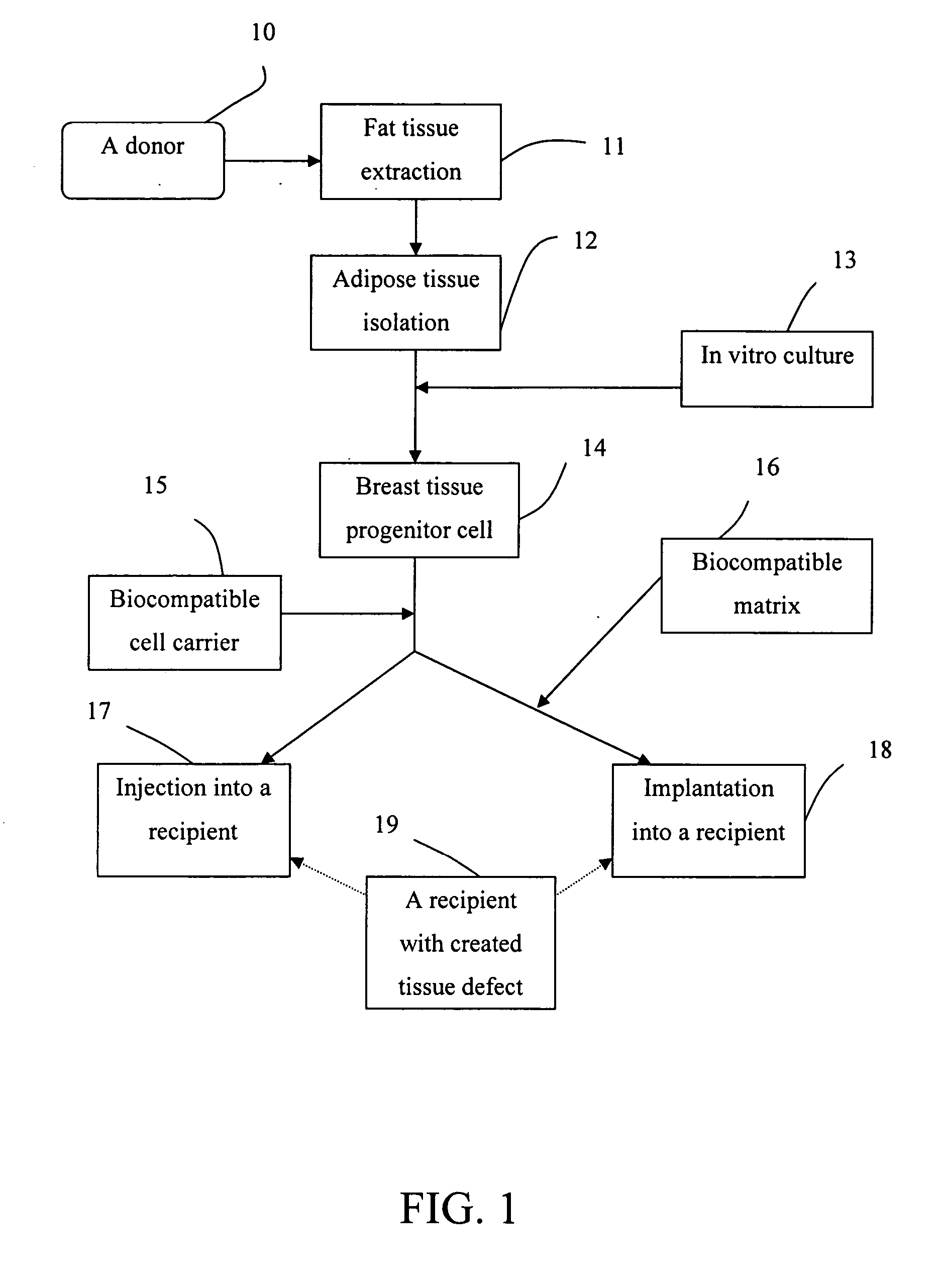Breast tissue regeneration
- Summary
- Abstract
- Description
- Claims
- Application Information
AI Technical Summary
Benefits of technology
Problems solved by technology
Method used
Image
Examples
example no.1
EXAMPLE NO. 1
Methods of Transplantation
[0034]FIG. 1 shows a method of treating a breast defect in a patient, the method comprising: a) differentiating an isolated human adipose tissue derived stromal cell into a breast tissue progenitor cell; and b) administering the breast tissue progenitor cell to a breast defect area in the patient. In one embodiment, the fat tissue from the donor is further differentiated into adipocytes in an in vitro procedure, followed by isolation to obtain a concentrated substance of breat tissue progenitor cells prior to the step of administering. In one embodiment, the breast tissue defect is created as an adjunct step for promoting stem cells differentiation and tissue regeneration at about the defect site.
[0035] As shown in FIG. 1, the fat tissue extraction step 11 may be carried out, for example by liposuction from a donor 10. The adipose tissue isolation step 12 may include breakup of the fat mass and removal of the unwanted non-cellular material. I...
example no.2
EXAMPLE NO. 2
Cell Carriers and Matrix
[0037] The formula consisting of breast tissue progenitor cells and cell carriers can be injected to the defect site of the breast using a syringe or other fluid delivery apparatus. In one embodiment, the formula is intended to enhance revascularization in situ. In another embodiment, the formula is intended to promote growth or multiplication of fat cells in the breast. For illustration purposes, the biocompatible matrix for cells to home in or adhere for intended differentiation purposes may comprise a foam or sponge that is compressible for inserting into the breast with a small opening. The biocompatible foam or sponge construct is characterized with plural pores, wherein at least a portion of the pores is interconnected and open to the outside of the construct. The foam or sponge can be cut, sized, and shaped as an implant. In one embodiment, the formula consisting of breast tissue progenitor cells and cell carriers may be loaded on the bio...
PUM
 Login to View More
Login to View More Abstract
Description
Claims
Application Information
 Login to View More
Login to View More - R&D
- Intellectual Property
- Life Sciences
- Materials
- Tech Scout
- Unparalleled Data Quality
- Higher Quality Content
- 60% Fewer Hallucinations
Browse by: Latest US Patents, China's latest patents, Technical Efficacy Thesaurus, Application Domain, Technology Topic, Popular Technical Reports.
© 2025 PatSnap. All rights reserved.Legal|Privacy policy|Modern Slavery Act Transparency Statement|Sitemap|About US| Contact US: help@patsnap.com

